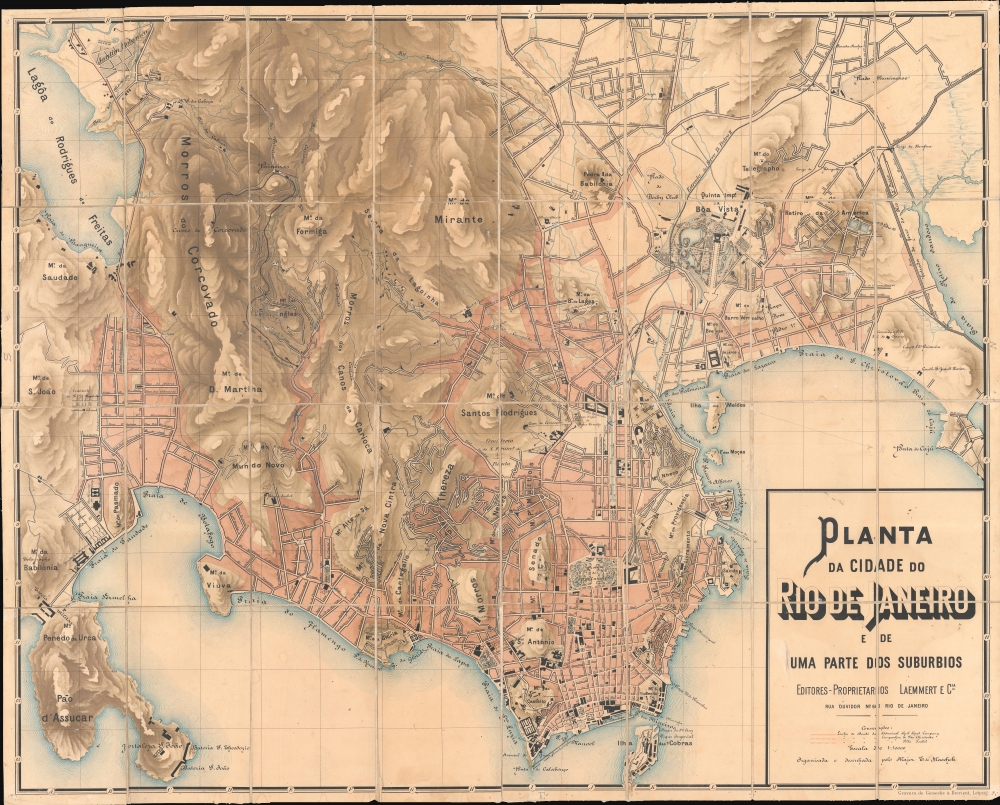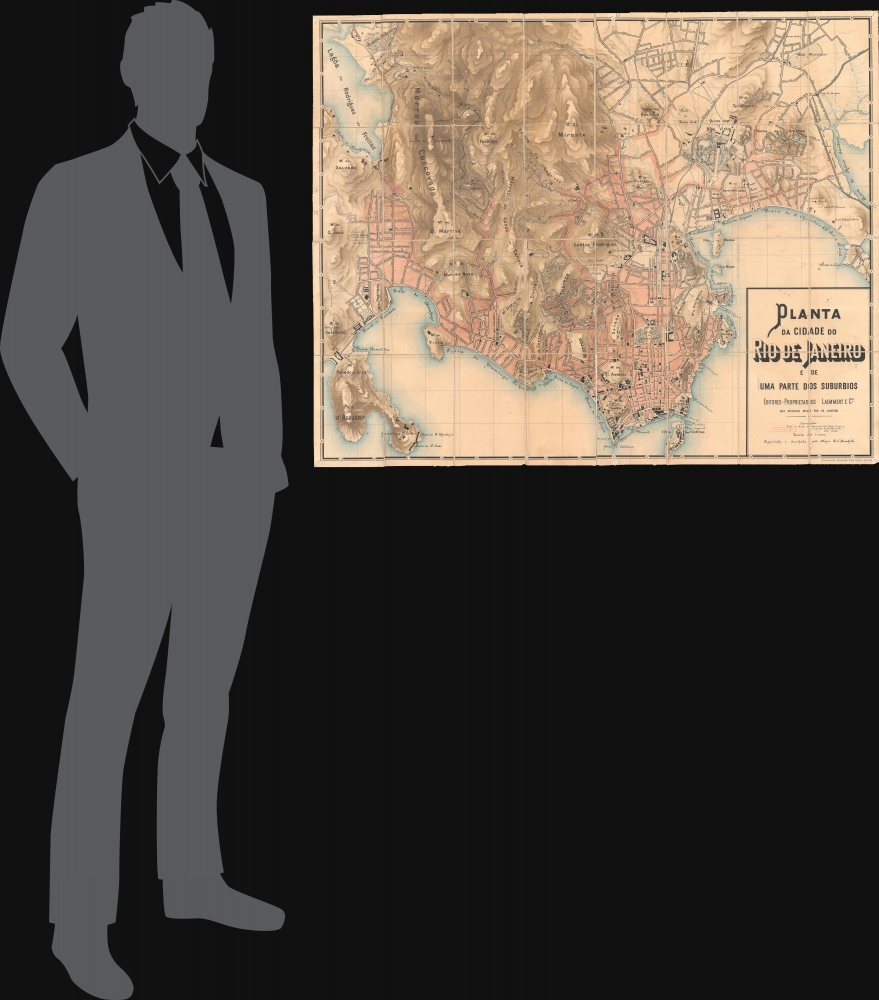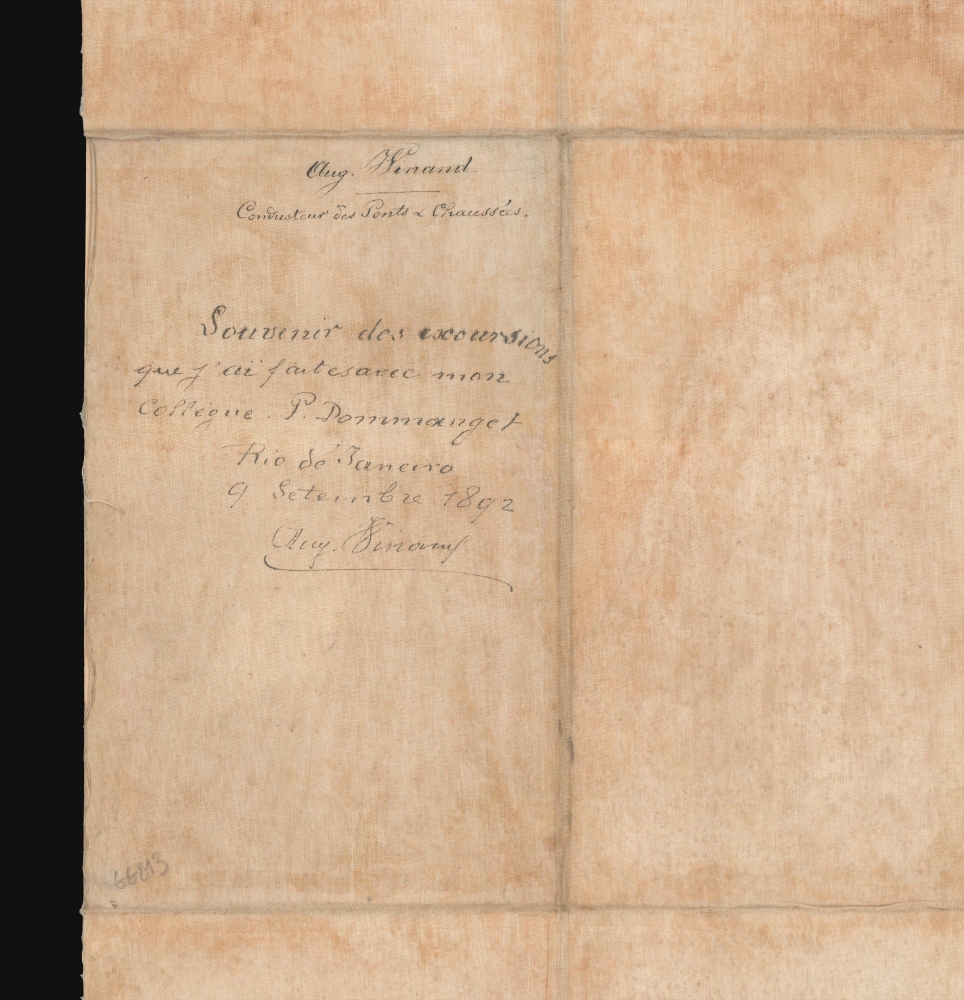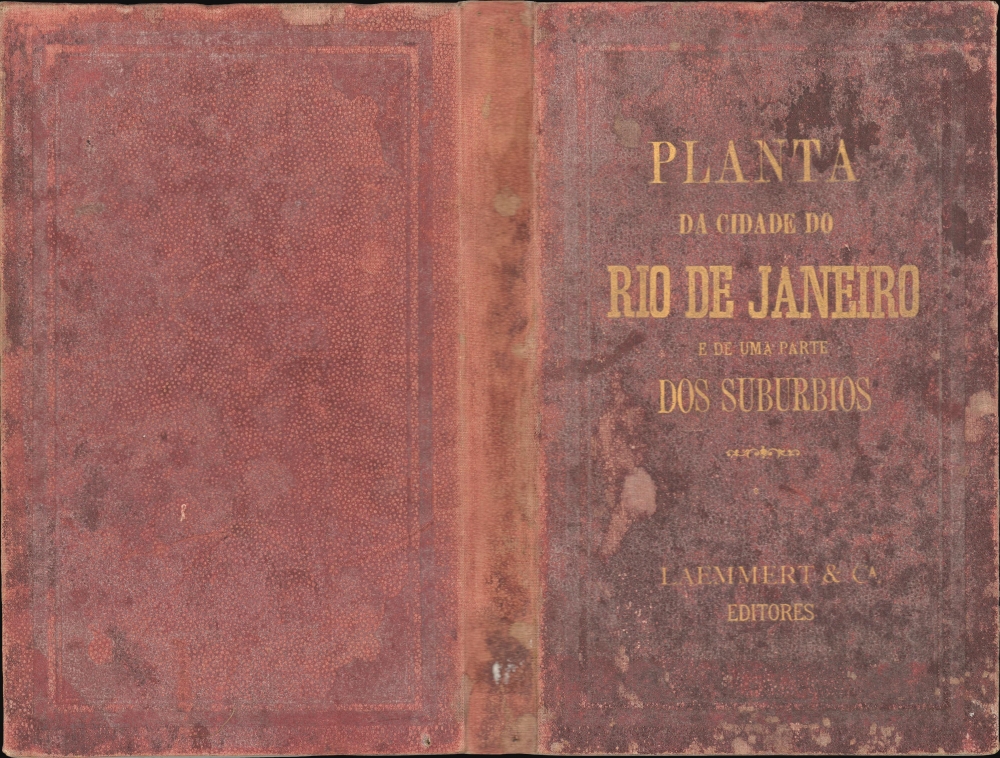1891 Maschek / Laemmert City Map of Rio de Janeiro, Brazil
RiodeJaneiro-maschek-1891
Title
1891 (undated) 33.25 x 41.25 in (84.455 x 104.775 cm) 1 : 10000
Description
A Closer Look
Coverage embraces from the Rodrigo de Freitas Lagoon to Benfica and from Fortaleza de São João to Ponta do Caju. The map employs clever shading conventions to emphasize Rio de Janeiro's dramatic geography, ranging from steep mountain peaks, to expansive beaches, to mangrove swamps - details that some historians have argued slowly disappeared on maps issued between 1890 and the 1920s. Throughout, important buildings, streets, neighborhoods, and the famous donkey-tram routes are illustrated. There are some minor manuscript annotations here and there, out of which we have been unable to tease meaning.Donkey Trams of Rio
The map prominently illustrates Rio de Janeiro's donkey-pulled trams, first introduced in 1859. These include the Companhia de São Cristóvão, Companhia Vila Isabel, and the Botanical Rail Road Company. This last, with its obvious English-language name, was owned by New York investor Charles Greenough, underscoring the vast investment that poured into Brazil from the United States in the second half of the 19th century. The donkey trams were phased out from 1905, when they were replaced with electric streetcars.Rio Modernizing
In the early 1890s, Rio de Janeiro was undergoing a period of prosperity and rapid urbanization. Following the overthrow of the monarchy and Brazil's proclamation of the Republic in 1889, Rio, as the capital, was at the heart of the new nation's political and cultural rebirth. This era was marked by a fervent push towards modernization, heavily influenced by European trends, particularly in architecture and urban planning. The city's elite, driven by a desire to showcase Brazil's progress on the world stage, initiated extensive renovation projects. This period also witnessed the early stages of the city's famous Carnival, an event that blended African, Indigenous, and European traditions, reflecting the diverse cultural tapestry of Rio de Janeiro.Provenance
A note on the verso states that this map was acquired on September 9, 1892 in Rio de Janeiro by Aug. Winand while traveling with his 'colleague' P. Dommanget. Winand held the post of Conducteur des Ponts et Chaussées. We can find no further record of either figure.Chromolithography
Chromolithography, sometimes called oleography, is a color lithographic technique developed in the mid-19th century. The process involved using multiple lithographic stones, one for each color, to yield a rich composite effect. Oftentimes, the process would start with a black basecoat upon which subsequent colors were layered. Some chromolithographs used 30 or more separate lithographic stones to achieve the desired product. Chromolithograph color could also be effectively blended for even more dramatic results. The process became extremely popular in the late 19th and early 20th centuries when it emerged as the dominant method of color printing. The vivid color chromolithography produced made it exceptionally effective for advertising and propaganda imagery.Publication History and Census
This chromolithograph map was compiled by the military and civil engineer Eduardo Maschek. It was engraved in Leipzig by Giesecke and Devrient, and published in Rio de Janeiro by Laemmert e Cia. There has been considerable scholarly debate regarding the actual date of this map, ranging from 1885 to 1900. We can lay this to rest. The Laemmert firm was renamed 'Laemmert e Cia', as here, In 1891. Manuscript on the verso confirms that this map was acquired by a Belgian traveler, 'Aug. Winand', in 1892. These data points suggest the map must have been printed in 1891. There are two versions, this one at 1:10000, and a more common half-sized variant at 1:20000. The map is extremely scarce in this large-scale edition. We note a single confirmed example of this edition at the Biblioteca do Senado Federal, and nowhere else. Other examples appear to be either the 1:20000 edition (we note 3 in OCLC), or digitized from the Senado Federal example.CartographerS
Eduardo Maschek (fl. c. 1860 - 1892) was a Austrian-Brazilian military engineer active in Brazil in the mid to late 19th century. He worked to compiled the Carta Geral do Império, the first official survey of Brazil, from 1862 to 1871. In 1883, he compiled maps for the Inspetoria Geral das Obras Públicas, the administrator of Rio de Janeiro's public sewers and similar works. In 1888, he registered a patent for a 'life-saving device, for trams or cars equipped with brakes.' He produced a map of Rio de Janeiro c. 1891. More by this mapmaker...
Laemmert (1828 - 1909) was a publishing firm active in Rio de Janeiro in the late 19th and early 20th centuries. It was founded by German-Brazilian brothers Ludwig Christian Eduard von Laemmert (August 10, 1806 - January 11, 1880) and Heinrich Wilhelm Laemmert (October 27, 1812 - October 10, 1884), known as Eduardo and Henrique, respectively. The brothers were born in Grand Duchy of Baden, Germany. Of the two, Eduardo arrived in Rio de Janeiro first, coming on a ship from Paris in 1828. Having previously worked at the G. Braun Bookshop and Printshop in Karlsruhe (1820 - 1825 ), he was well acquainted with the book trade and founded 'Livraria Universal' on his arrival in Rio de Janeiro. Henrique arrived five years later in 1833, at which time the brothers founded 'E. e H. Laemmert', with headquarters at Rua da Quitanda, n° 77. Eduardo briefly returned to Paris in 1837, where he acquired three printing presses and acquired training in their use. On his return to Rio in 1838, the brothers founded 'Tipografia Universal' on Rua dos Inválidos. The organization was an enormous success, with over 5000 books a month being printed and bound in their factories. In 1861, they won the silver medal at the 1st Brazilian Industrial Exhibition, and in 1862, Emperor D. Pedro II officially visited the brothers' enterprise. In 1877, Eduard left the firm, returning to Karlsruhe, Germany, where he died in 1880. Henrique died four years later, in Brazil, in 1884. With the death of the Laemmerts, the business was reorganized into a partnership formed by Gustave Massow, Edgon Widmann Laemmert, and João Pedro Francisco Artur Sauer (1840 - 1920). In 1891, the firm was again reorganized as 'Laemmert e Cia.' They expanded with new branches in São Paulo and Recife. In 1903, there was another change of partners, and Edgon was replaced by his son Hugo, and Gustave by his brother Hilário. The bookstore was destroyed by a fire in 1909, but the Tipografia continued under multiple names, including 'Sérgio e Pinto' (1919), 'Álvaro Pinto e Cia','T ypographia do Annuario do Brasi' (1920), and 'Alexandre Henault e Cia.' Remarkelby, the firm was resurrected in 1970 as Gráfica Laemmert, when it once gain began publishing books. Learn More...








